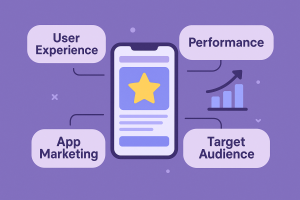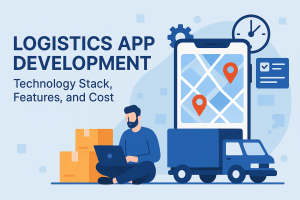Mobile Apps already control all elements of our lives, including how we interact, shop, work, and even relax. The mobile app sector is booming, with revenues projected to reach $935 billion by 2025. This makes it very evident that you’re losing out on a lot if you’re absent from the app world. The most annoying aspect is that writing complicated code is one of many things needed to create a good application. Getting everything just right is the aim without any app development errors. You can save time, money, and frustrations by avoiding typical pitfalls in app creation.
Let’s go over the five most frequent mobile app mistakes developers make and how to prevent them if you’re brainstorming your next big app idea. Indeed, these observations also apply to book distribution, book publishing, and book printing because the fundamentals of error prevention are the same no matter the product.
Neglecting Market Research
Let’s say you launch an app that nobody uses. Doesn’t that seem like a nightmare? When mobile app developers neglect competitor research, this is what occurs. Just like creating a book without knowing who your readers are, developing an app without knowing the target audience analysis would inevitably fall short.
Why It Matters
You can better comprehend your user demand study with the use of market research. Without it, you run the danger of creating something that is out of date or overshadowed by superior rivals.
Key Tips for Success
- Identify your target audience and evaluate their needs. If you distribute books, for instance, consider what characteristics customers would find most appealing about your app.
- Examine trends and competitors with tools like App Annie and Google Trends.
- Examine what is and is not effective for rivals.
Consider market research as the foundation for your app. Knowing your audience is important if you’re creating an app or working on publishing services.
Poor User Experience (UX) Design
Here’s the brutal reality: If your app is not known or clumsy, users will uninstall it more quickly than you can say “download” Even the most creative mobile app design principles can be killed by a poor user experience (UX). Here is what makes a great UX
- Simplicity: Make sure the layout is simple and the navigation is easy to use. Users are too busy to navigate a maze of tunnels.
- Responsiveness: Your app must function and should have an intuitive UI across all platforms, including tablets and smartphones.
- App Usability: You can generate mockups and test layouts before launch with the aid of programs like Adobe XD and Figma.
88% of users say they won’t use an app again after a negative encounter. Right there, that is a deal-breaker. Don’t make typical UX errors like small buttons, crowded interfaces, or menus that are too complicated. Make it simple. Make it smooth.
Ignoring Platform-Specific Requirements
When it comes to app development, there is no one-size-fits-all solution. iOS app development vs. Android app development are like apples and oranges, both fruits, but quite different.
Why this matters
- Distinct rules: iOS and Android have different specifications for functioning, features, and design.
- User expectations: Compared to iOS users, Android consumers anticipate a different experience. Failing to do so can drive half of your audience out.
- Tech differences: Platform-specific optimization is essential for seamless performance across hardware and operating systems.
Is it better to go cross-platform development, hybrid, or native? Your goals and money will decide that. Native apps are more expensive yet provide the best performance. Although hybrid applications are less expensive, they could lack the same finished appearance.
Pro Tip: The best advice is to test your app manually on every platform to prevent compatibility issues.
Skipping Thorough Testing
After developing, do you think your app is ready? Rethink your thoughts. The unsung hero of developing mobile apps is testing. You’re setting off a ticking time bomb of errors, crashes, and negative reviews if you don’t have it. Here’s how to ace app performance evaluation done
Functional testing makes sure that all of your app’s features operate according to plan, while performance testing examines how well it can manage high traffic or massive data loads. The goal of bug testing tools is to secure user data by making sure it is encrypted and shielded from potential dangers. Usability testing, on the other hand, looks at how responsive, easy to use, and intuitive the app is.
Appium, Selenium, or Firebase Test Lab are examples of automated mobile app QA tools. Beta testing is the best option. You’ll find errors you might have overlooked with the helping hands of real users.
Fact check: Resolving defects after they’ve been released can be up to five times more expensive than doing so during development. Testing early is not optional. It is required.
Overlooking Post-Launch App Maintenance
Just launching your app is the first step. You’re going to be rudely awakened if you believe the work is done. The application you’re using runs the danger of becoming obsolete or, worse, without routine maintenance.
Your app thrives when it is properly maintained. Regular updates address issues, improve speed, and add new features, making your app progress and not be abandoned. Analytics applications that track user behaviors, such as Firebase or Google Analytics, provide insightful data. Meaningful upgrades are guided by user feedback, and A/B testing identifies the most popular features or designs. Apps that receive regular updates possess retention rates that are 80% higher than those that do not. Make constant improvements, post-launch updates, and your users will remain loyal.
Wrapping It Up: Build Smarter, Not Harder
Avoiding these five frequent blunders will save you a lot of problems when creating a successful app development. Invest in the mobile app best practices like great UX design to keep consumers interested after conducting in-depth market research to understand who your audience is. Platform-specific standards should be met to provide an error-free interface, and testing should never be neglected because bugs can destroy even the greatest apps. Maintaining your app after launch is just as important to its survival. Your app can stick out in the very competitive mobile app market with careful planning, well-considered design, and ongoing development. Ready to make your app creation strategies a successful one? Start Now.







